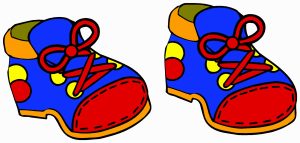
Have you ever stopped to wonder what children’s literature actually teaches vibrant youth? There are all sorts of well known works but one that particularly stands out is the Old Woman Who Lived in a Shoe. It’s very unique and individuals can arrive to different interpretations as to what the literary piece means.
It’s a nursery rhyme that many children have been exposed to. The rhyme has shifted though as noted in the 1794 Gammer Gurton’s Garland. It was stated that the old lady whooped the children in the end. This may have been viewed as a trigger though, so it was changed over time into today’s more child-friendly version. This isn’t the only change though. In other prints, it’s been noted that the story takes a darker route. Particularly in the 1797 Infant Institutes: “Then out went th’ old woman to bespeak ’em a coffin, and when she came back, she found ’em all a-loffeing.“
Children in this generation are exposed to more mature realistic stories as compared to children in the past, but does that mean they’re more understanding? It’s quite possible, but it also depends on the region. The version in England isn’t going to necessarily be similar to a Scottish version. There’s a message in a few versions that the old woman is around to enact punishment to children who misbehave and stands as a symbol to correct bad behavior if necessary so children are made aware that they should behave.
One more theory to take into consideration is the Queen Caroline theory and how the rhyme is actually a reference to Caroline of Ansbach and the eight children she had. Her first son was born in 1707 and that links the possibility that it could be a reference to her. Despite its mysterious history, the rhyme is something that should definitely be shown to a child to get them thinking of not only the history but of the world around them and so many other nursery rhymes.